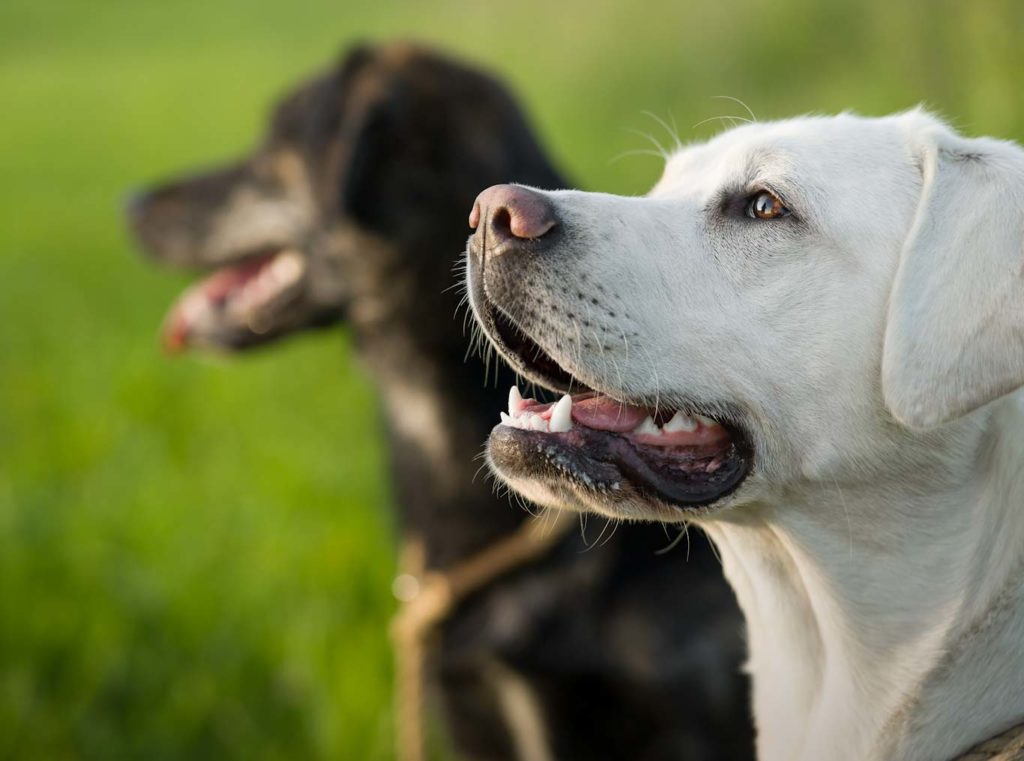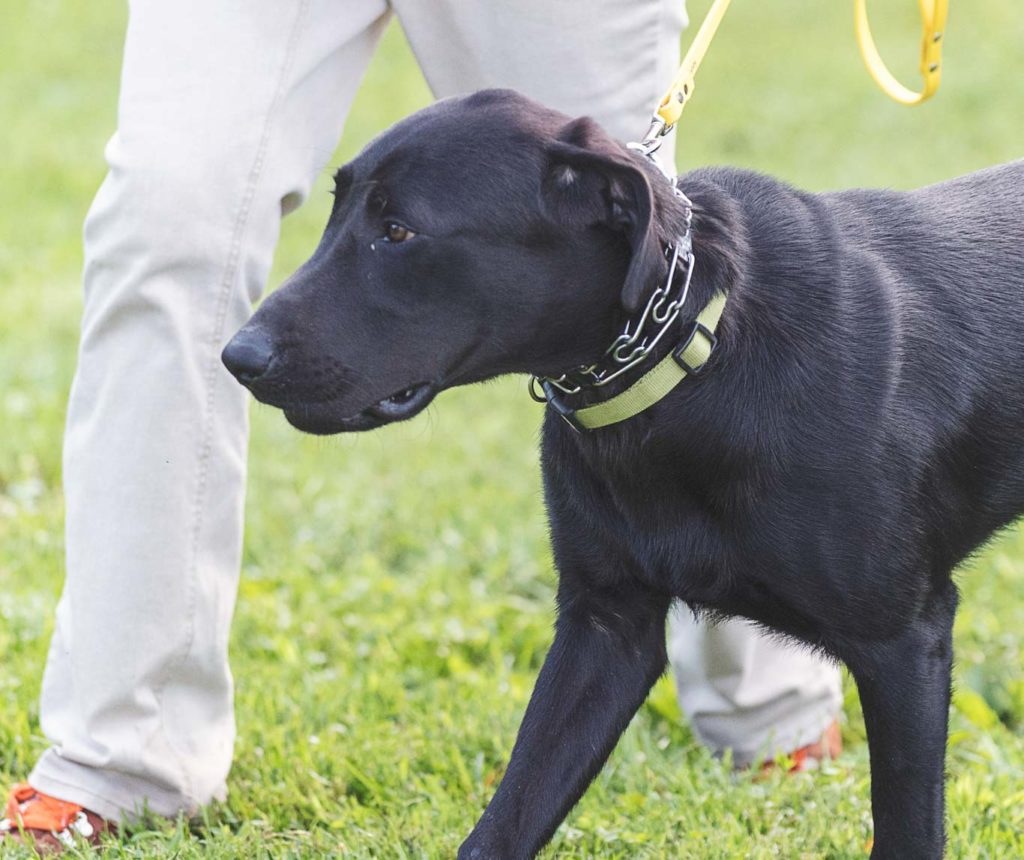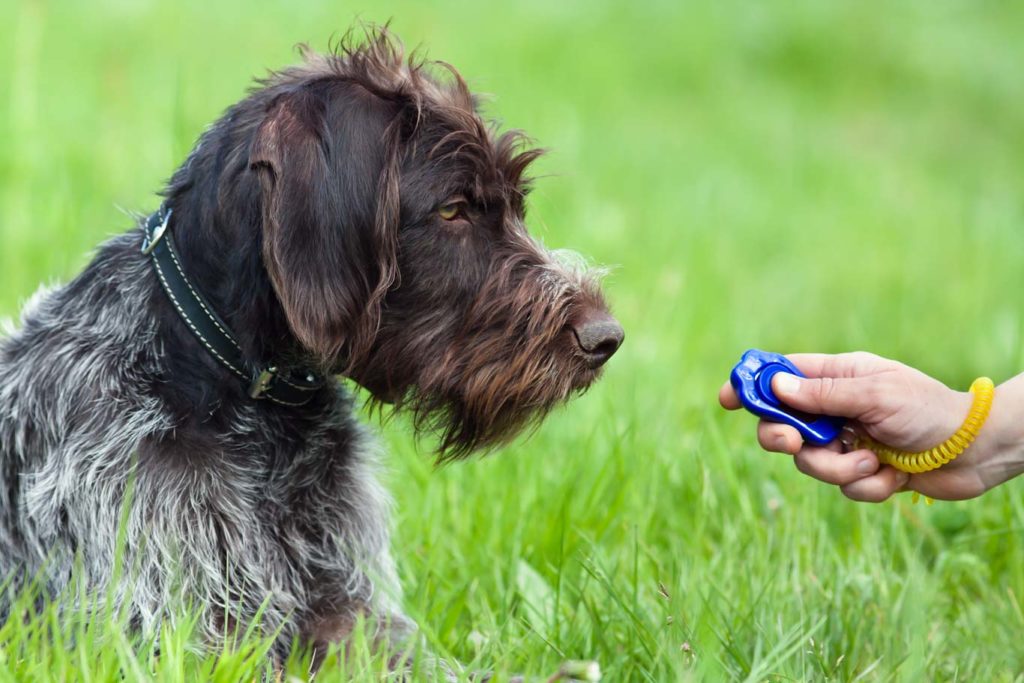Our Dog Training Philosophy
When it comes to training methods there is much debate in the industry on which is the best to use. There is an overwhelming number of methods out there that all claim to yield the best results. Philosophical, cultural, emotional and ideological differences have resulted in a plethora of dog training methods – alongside a great deal of confusion as to which method is actually the most effective.

Here at the School for Dog Trainers, we use only modern, scientifically-proven training methods. We owe it to our students and clients alike to provide them with the most effective and practical training methods in the industry. Whereas many training philosophies fall to an extreme side of the spectrum, ours revolves around balance. We believe that each tool in our dog training toolbox has a purpose and a place, and that every dog should be assessed as an individual when developing a training plan.
Dogs are much like humans in the respect that no two are the same. When a trainer restricts themselves exclusively to only one philosophy, they limit the number of dogs they can effectively work with- especially when dealing with behavioral issues. Do you want to experience success in your dog training career? If so, understanding how to best use different styles of training to your advantage is vital.
The School for Dog Trainers has devoted the last 13 years to studying different training philosophies, analyzing which are the most effective and implementing them in our dog training programs. This has enabled us to develop a training philosophy combining science and learning theory with extensive firsthand experience. We have built a reputation in the canine industry for working with the dogs that other trainers cannot or will not and having positive outcomes with them. We have achieved these results utilizing the comprehensive method of Operant Conditioning. We have found that by using all four quadrants of operant conditioning appropriately, a trainer will have all the tools necessary to effectively work with a dog or modify undesirable behavior.
What is Operant Conditioning?

Operant conditioning is the learning principle in which consequences are controlled and manipulated in order to change behavior. Many times when people here the term “consequence” they associate it with a negative outcome. A “consequence,” however, is simply the result of an action or condition. Consequences are vital to learning – if an outcome of an action is good, the behavior is likely to be repeated. If an outcome of an action is bad, the behavior will likely occur less frequently. In dog training, a consequence is usually a reward or a correction appropriately administered after a desired behavior is asked for.
Behaviors we want are rewarded (increasing the likelihood the behavior will be performed again), while behaviors we do not want are disciplined (decreasing the likelihood the behavior will be displayed again). Through this principle we establish a clear method of communication between us and our dogs, along with clear expectations and boundaries.
Trainers who understand how dogs learn know that the rewards and corrections we administer to our dogs must be fair and accurately timed. Correcting a dog that does not fully understand the behavior you are asking them to perform is poor leadership and will create problems instead of solving them.
How would you feel if a teacher gave you a comprehensive test on a topic they taught you barely anything about? It wouldn’t be fair, would it? Training dogs is very much the same – cues must be communicated thoroughly and taught in a manner that the dog can understand. Baiting and luring is a valuable training method which we use to effectively communicate a desired action to our dog. Once we are certain that the dog has learned the behavior and can perform it consistently, corrections can be administered when they fail to respond correctly. It is vital to ensure that the dog is failing to perform the behavior not due to a lack of understanding regarding what they are being asked to do – but instead because of some other motivator.
Appropriate Levels of Correction
Understanding how to use the appropriate level of correction on a dog is another component of fair leadership. Not all dogs or behaviors require severe corrections. At the School for Dog Trainers, we emphasize using the lowest level of correction possible in order to achieve the desired result. Every dog has a different threshold, and understanding how to read each dog you work with and the level of correction they require is a vital part of being a good dog trainer and a fair leader.
Proper use of correction vs. abuse

In the dog training industry, there are many tools that have earned an undeserved stigma. Both heavy handed aversive trainers and extreme positive trainers have turned valuable assets into torture devices; one by abusing the use of training collars, and the other by spreading misinformation.
Any training tool can be used properly and/or abused. Most commonly people will demonize prong collars or remote collars (e-collars) but neglect to address the fact that human hands and leashes are far more frequently misused. If someone has the intention of hurting a dog, they are going to do it regardless of what type of collar the dog is wearing.
At the School for Dog Trainers, we believe in the proper use of all training tools. Proper utilization of training tools can only be achieved with proper education, and our mission is to properly educate every student that comes through our school in an effort to end the misuse of training tools.
With proper use we can achieve incredible results with training tools. We are able to effectively rehabilitate dogs with severe behavioral issues that would otherwise be put down. We can help families develop a healthy relationship with their dog that they were going to surrender to a shelter, and we can safely communicate with our dogs off-leash through reliable obedience. The more control we have of our dogs, the more freedom we can give them and the safer they will be.
Why not purely positive?
When you restrict yourself to one quadrant of operant conditioning – such as positive reinforcement training techniques only – it creates limitations especially in regards to behavior modification. Treatment plans for some forms of aggression require the use of training tools and techniques in order to discourage the undesirable behavior.
Many purely positive trainers will not work with dogs who are aggressive because, in most cases, the aggression cannot be rectified simply through clicking and treating. Another significant issue with behavior modification and purely positive techniques is that we cannot simply ignore behaviors that can be dangerous. We have had great success in the field of behavior modification – so much, in fact, that Highland Canine Training, LLC has developed the reputation of being the best in the industry when it comes to behavior modification. We have had tremendous success with dogs suffering from extreme aggression who would have otherwise been euthanized.
Here at the School for Dog Trainers, we also highly encourage the use of clicker training. We love clickers and see them as a staple tool for shaping behaviors and breaking complex actions down into simple steps. We teach how to effectively use all four quadrants of operant conditioning, and students learn how to effectively use the clicker and training collars to teach and maintain behaviors.
Clicker Training

You will find clickers being used every day at the School for Dog Trainers! Clicker training has been proven to significantly enhance communication between humans and dogs, in addition to many other species. Using a clicker allows us to “capture” the exact moment they are performing a behavior we desire. With a vast number of behaviors trained here from basic obedience to complex service dog tasks, clickers are an invaluable tool.
Students here are taught the proper use and techniques for clicker training in their first week of school, long before they are taught to use any other training tool. With over 13 years in the industry, the School for Dog Trainers recognizes the importance and value of the clicker in shaping and capturing dog behaviors. During their time here, Master Dog Trainer and Service Dog Trainer students use clickers in the majority of their practical examinations. Through the use of clickers, students are able to train behaviors faster and more reliably than they would with other training methods. It has been proven that dogs trained with a clicker typically perform tasks and behaviors with more enthusiasm and motivation than dogs not taught with a clicker.
Clicker savvy dogs – those who have been taught a multitude of behaviors with a clicker – are some of the most fascinating and comical dogs to witness. They have learned to problem solve and like to try different behaviors to achieve what they are working for. For a dog to receive their reward, whether it be a food motivator or a toy, they must first perform a desired behavior. A clicker savvy dog will try numerous behaviors until they hear a “click,” signifying that they are on the right track or that they have just performed the behavior their trainer was seeking from them.
Clickers encourage the dog to think and act in desired ways. Absolutely no pressure is put on the dog to perform. The trainer will encourage and motivate the dog in small steps to capture the behaviors they desire. Over time, clicker savvy dogs learn to perform behaviors faster than other dogs and with great intention. Clickers are the staple of positive training techniques and we encourage our students to begin with this tool above all others.
Training dogs may seem like a simple task. Some trainers make it look effortless, and most people see this and believe that they can do it too. Here at the School for Dog Trainers, we know that training is dog is far more than rewards and corrections. To be a great dog trainer, one must fully understand the dog as a whole. Educating those interested in dog training consists of a firm grasp of biology, ethology, anatomy, theories of how dogs learn, breed knowledge, operant conditioning, training techniques, hands on experience, and so much more.
Training techniques are a major controversy in this field; however, any training technique will be useless if you do not understand what makes a dog and how to motivate them. No two dogs are the same just as no two owners are the same, and all are unique in their behaviors and desires. In order to satisfy and motivate both dog and owner, a great trainer must not only have a comprehensive knowledge of the canine, but also must understand people and how to effectively work with them.
Working with People
There are various aspects to becoming a successful dog trainer; training dogs is only one of these. We receive a lot of perspective students who “like dogs more than people.” Although that may be true, the dog you are working with will not write your check. Knowing how to work with people is the most important aspect of dog training. We cannot say enough how important it is to understand your client and their individual desires and limitations. Our students receive countless hours of lectures, hands on training, and real-life experience working with clients. We stress the importance of public speaking skills and the ability to articulate the proper use and technique for any training method to clients. In order to be effective as a trainer one must possess the skills necessary to working with both dogs and humans.
The dog training industry is large, confusing, and unfortunately saturated with pride. We teach our students how to weed through the nonsense and become a successful dog trainer by educating them on every method utilized in the industry. The training methodology is second to the education we provide in understanding the canine as a whole. Before a trainer can begin, they must first understand why dogs behave the way they do – and how to recognize whether this behavior instinctual or environmental. Knowing why they exhibit certain behaviors will provide a dog trainer with the next piece of the puzzle: which method to use. Our mission is to arm students with every necessary component of knowledge they will need to understand each dog they work with and effectively succeed in their dog training career.
